It will lead to devastating ecological modifications and endanger the island’s distinctive wildlife.
At the southernmost extent of India, off the japanese coast, Great Nicobar Island (GNI) is a tropical oasis within the Andaman Sea. This modest biogeographical marvel of 910 sq. kilometres is the final of 572 islands that make up the Andaman and Nicobar archipelago. Historically, this island was inhabited by the Nicobarese and the Shompen communities. But a 3rd heterogeneous settler neighborhood has been added on account of migration of individuals from numerous States in India to the GNI because the Sixties. The range of habitats on the island, mixed with the island’s geographical place and local weather, has resulted in an assemblage of distinctive wildlife, together with a number of endemic species. The many land use modifications that the island has undergone over time has resulted in an elevated overlap between folks and endemic fauna and the inflow of invasive species, which was accelerated by sudden alterations to the surroundings such because the tsunami of 2004 and subsequent rehabilitation efforts.
Protected standing stripped
Last yr, massive swathes of land and coastal space, together with parts of the Great Nicobar Biosphere Reserve and Galathea Bay, had been stripped of their protected standing to make method for an enormous development undertaking envisioned by the NITI Aayog and proposed by the Andaman and Nicobar Islands Integrated Development Corporation. The plans embrace the development of a global container transshipment terminal, a global airport, an influence plant, and a township space, involving the usage of a complete of 244 sq km of lush forest and coastal areas throughout the confines of a UNESCO Biosphere Reserve. Needless to say, it will lead to drastic and devastating modifications to the ecology and sociology of the island.
The website choice and scale of the plans remained unchanged even after objections had been raised in regards to the fast and inadequate environmental impression evaluation (EIA) carried out within the GNI from December, 2020 to February, 2021. Former Prime Minister Rajiv Gandhi had rejected a plan for the development of a transshipment port at different websites within the Andaman and Nicobar Islands, together with the capital, Port Blair, citing its potential impression on the islands.
However, now the Andaman and Nicobar Forest Department, the Tribal Welfare Department and the National Board for Wildlife, amongst others, have come collectively to fast-track the plans in a seemingly coordinated method. From denotifying protected areas to endangering the existence of the forest-dwelling Shompen neighborhood, the wide-scale improvement continues to loom massive for the GNI, which additionally has a 202-km shoreline surrounded by coral reefs and ecologically vital marine life on which the Nicobarese folks rely.
| Photo Credit: Ishika Ramakrishna
Over the final two years, quite a few issues have been voiced by a plethora of events: proper from the Environment Appraisal Committee (EAC) of the Ministry of Environment, Forest and Climate Change to massive teams of ecologists, anthropologists, and the general public. These embrace the hazards of creating a township over 149 sq km of seismically unstable land; the dearth of satisfactory entry to freshwater for the envisioned way forward for the island; the immense impression on coastal nesting websites of the weak leatherback sea turtle; the lack of round 8,52,245 timber from among the most pristine forests courting again to the Pleistocene interval, endangering the already small inhabitants of the Nicobar long-tailed macaque ( Macaca fascicularis umbrosa); and the destruction of the restricted habitat accessible to the Nicobar megapode ( Megapodius nicobarensis).
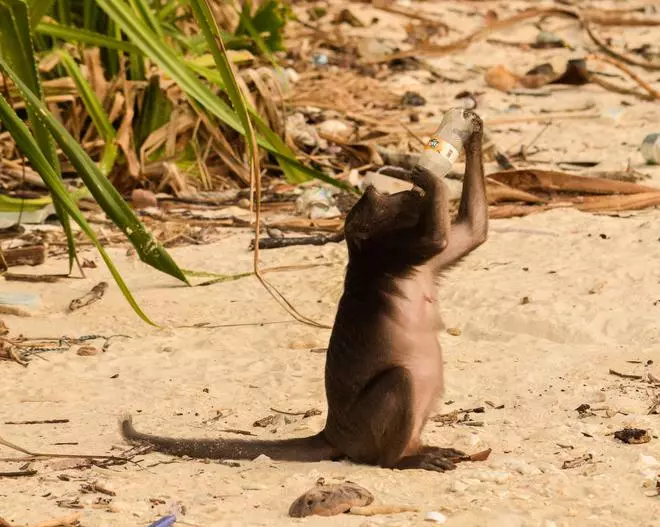
| Photo Credit: Ishika Ramakrishna
The undertaking is estimated to require 86,600 kilolitres of water per day (KLD), of which 45,000 KLD will likely be freshwater drawn from floor reservoirs but to be constructed. The plans additionally don’t at current embrace provisions for disposal or protected recycling of waste and remnant water from these processes..
Studies on macaques
Following the tsunami, research had been carried out within the GNI by numerous Indian students on Nicobar long-tailed macaques and their intricate socio-ecological programs: from their inhabitants and conservation standing to their cognition and interactions with native settler communities. The printed scientific proof from the research and the proposed non-inclusive improvement of the island led the Association of Indian Primatologists (AIP), a neighborhood of individuals from numerous walks of life who share the targets of selling scientific aptitude, ethics, and welfare in Indian primatology, to specific concern in regards to the destiny of the macaques.
The AIP took exception to the EIA carried out by a Hyderabad-based laboratory in the course of the public listening to held in January this yr, mentioning the deceptive and inaccurate statements relating to the endemic macaques, together with solutions for unscientific and doubtlessly dangerous mitigation measures. The report, the AIP maintained, disregarded the ecology and behavior of the species and undermined its worth to the ecosystem though it’s a Schedule I species protected underneath the Wildlife (Protection) Act, 1972, and a “vulnerable” species globally. Besides, it was evident that inadequate effort and time had gone into assessing the true impression of the proposed undertaking on the macaques.
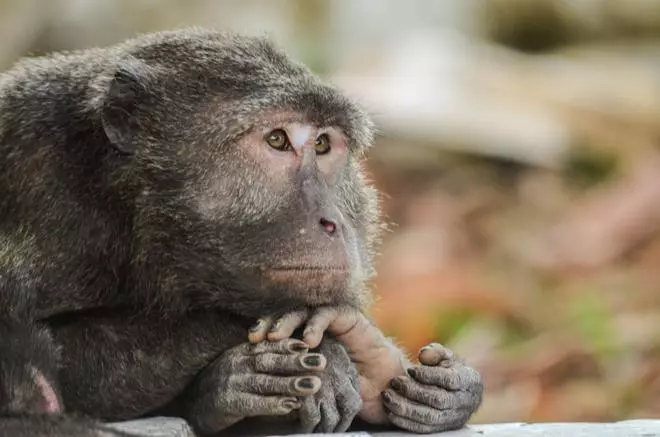
| Photo Credit: Ishika Ramakrishna
The report additional appeared to wantonly villianise the macaques via the usage of phrases comparable to “rampant”, “pest”, and “menace”, which the AIP discovered to be unsubstantiated and unscientific and primarily based largely on rumour and assumptions after a mere four-day survey. It asserted that the way forward for a Schedule I species couldn’t be selected the idea of hypothesis.
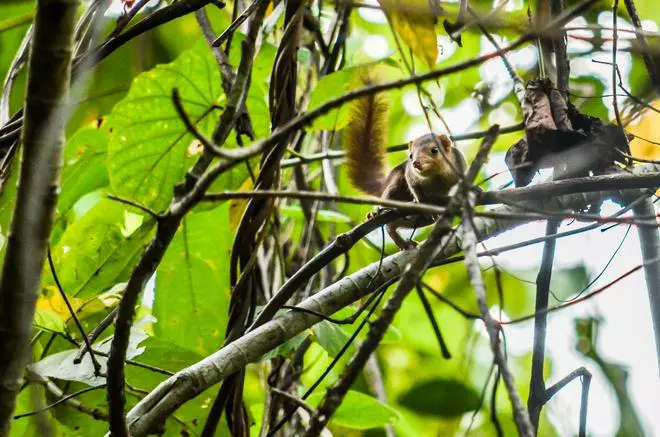
| Photo Credit: Ishika Ramakrishna
Following criticism relating to the dearth of proof and insufficient mitigation measures cited within the EIA (of the Hyderabad-based laboratory), the Principal Chief Conservator of Forests, Andaman and Nicobar Islands, and the Ministry of Home Affairs directed the Wildlife Institute of India, Dehradun, and the Salim Ali Centre for Ornithology and Natural History, Coimbatore, to develop a conservation motion plan completely for marine turtles, saltwater crocodiles, megapodes, and mangroves. The Zoological Survey of India was equally tasked with creating a plan for coral reef conservation and translocation. However, other than the EAC making a passing point out of putting in cover bridges to take care of forest corridors, no specific conservation plans have been looked for the macaques.
Lack of viable markets
Although adverse interactions between folks and macaques happen within the GNI, the EIA report hyper-exaggerates the diploma and extent of those, in accordance with the AIP. A research of native farmers from 2020 means that small landholdings and the dearth of an economically viable marketplace for regionally grown crops are what have put folks in financial peril, and never the macaques themselves. Residents of the island mirrored that macaques elevated their presence in human settlements after the tsunami destroyed patches of forest containing their meals. Similar research from different areas have additionally proven that the destruction of habitat results in adverse interactions between people and macaques.
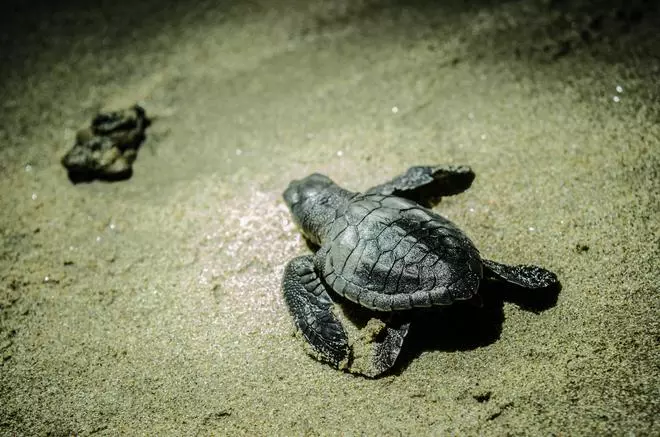
| Photo Credit: Ishika Ramakrishna
From a number of surveys and research since 2017, it’s clear that the general sentiment in the direction of the macaques can’t be categorised as “negative” and human-macaque interactions aren’t restricted to “conflict”. The residents revere macaques as monkeys from the Ramayana who drifted there in the course of the battle with Ravana. The native Hindu neighborhood additionally likens the macaques to the monkey god, Hanuman, which causes them to deal with the species with respect and kindness.
Reduction of forest cowl
The residents of the GNI, on the idea of their observations, opine that the gradual discount in forest cowl over time and the tsunami contributed closely to the rise in battle, which takes the blame away from the macaques and locations it on folks. Most of the individuals are empathetic and don’t want to use dangerous or deadly means to mitigate their adverse interactions with the macaques.
The Nicobarese neighborhood has a deep reference to the Nicobar long-tailed macaque. All residents, settlers and indigenous communities alike, have an instinctive fascination for these animals and revel in observing them.
The nature of individuals’s interactions with the endemic macaque is exclusive, multifaceted, and sophisticated. Calling these relationships “rampant” battle is an oversimplification at greatest, and a feeble try and disregard a whole inhabitants of a weak species at worst. One should work in the direction of battle mitigation and the preservation of optimistic relationships with the help of researchers and native stakeholders whatever the impending development plans within the GNI. Conflict as an argument for the dismissal of the Nicobar long-tailed macaque is unacceptable and unethical.
Apart from the macaques’ interactions with the folks, the anticipated alterations to the island’s habitats are one other main space of concern. An evaluation of macaque troops within the island in 2016 discovered that 40-70 per cent of the 36 troops recognized stand to lose their territories due to the accredited development work on the island. Rising urbanisation and different types of secondary improvement are identified to contribute to elevated human-animal battle elsewhere and with a number of animal species and are prone to be detrimental on this panorama too.
Anthropogenic threats
Sudden modifications in habitat may improve territorial fights among the many macaques and lead to critical accidents, which frequently result in fatalities. Landscape stage modifications additionally modify macaque diets, affecting their well being and diet. Other anthropogenic threats, from the danger of electrocution to local weather change, will come up as properly. Macaques have a restricted vary, and such drastic alterations to their environment and threats to their already restricted numbers can improve probabilities of inbreeding and lack of various gene swimming pools. This might be disastrous, leading to epidemics and lack of reproductive viability that can decimate the inhabitants. One stands to additional endanger and lose a species of primate in India that’s already weak even earlier than one has had an opportunity to completely perceive its ecology, behaviour, and wishes.
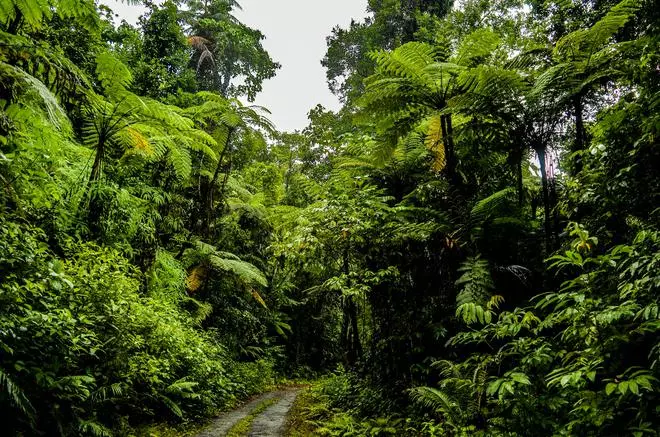
| Photo Credit: Ishika Ramakrishna
Sudden, fast transformations on the island will likely be detrimental to the social, financial, and ecological well-being of all concerned. The indisputable fact that the big undertaking within the GNI at the moment lacks sustainable planning, a scientific foundation, and impartial voices can solely lead to catastrophic penalties. The hope is that efficient mitigation measures and scientific and sustainable planning will make sure that the dear biodiversity and breathtakingly stunning surroundings of Great Nicobar Island can proceed to dwell on, unthreatened.
Ishika Ramakrishna, exterior of her ongoing doctoral work with human-primate relationships on the Centre for Wildlife Studies, India, can be a member of the Association of Indian Primatologists (AIP). This article was conceptualised, supported, and developed in collaboration with the AIP.
The Crux
- Great Nicobar Island is the final of the 572 islands of the Andaman and Nicobar archipelago.
- The island has distinctive wildlife, together with the Nicobar long-tailed macaque, and is a part of UNESCO’s World Network of Biosphere Reserves.
- But the NITI Aayog has envisioned an enormous development undertaking on the island that can embrace a global container transshipment terminal, a global airport, an influence plant, and a township.
- Large swathes of land and coastal space had been stripped of their protecting standing final yr for the undertaking.
- If it goes forward in its present type, it could actually solely lead to catastrophic penalties.


